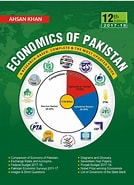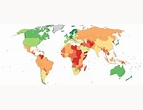Pakistan Is An Economic Country!
Pakistan is categorized as a developing nation in South Asia, having a diverse population of over 220 million individuals. Its economy is a mixture of public and private enterprises, as well as a vast informal sector. The country is enriched with numerous natural resources such as fertile agricultural land, minerals like coal, copper, and gold, and has significant natural gas reserves. Nevertheless, Pakistan encounters substantial economic obstacles, including poverty, inequality, and high debt levels. According to the World Bank, as of 2020, roughly 24.3% of the Pakistani population lived below the poverty line, while the top 10% of the population earned approximately 27% of the nation's total income.
Pakistan also experiences challenges with high internal and external debt. As of 2020, Pakistan's external debt was approximately $115 billion, and its internal debt was estimated at around $100 billion, which has limited the government's ability to invest in crucial areas such as education, health, and infrastructure.
When Pakistan was founded in 1947, it was mainly an agricultural economy, with agriculture contributing 53% of its GDP and employing 65% of its labor force. Agriculture was responsible for 99.2% of the country's exports and earned 90% of its foreign exchange. At the time, Pakistan had a total population of 30 million, with only 6 million living in cities. The literacy rate was only 10%, and poverty was widespread, with a ratio of 55-60%. Despite these challenges, both West and East Pakistan had abundant natural resources, including natural gas, crude oil, coal, limestone, and marble.
In 1950, Pakistan's national and foreign savings rates were both 2%, and the investment rate was 4%. Manufacturing contributed 7.8% of the GDP, while other sectors contributed 39% of it. The trade balance in payments showed a deficit of 66 million rupees in 1949-50, leading Pakistan to adopt an import-substituting industrialization strategy.
Despite these difficulties, Pakistan has made some progress in the last few years, such as in macroeconomic stability and energy sector reforms. For instance, the government has initiated several reforms aimed at decreasing the country's fiscal deficit, enhancing tax collection, and promoting foreign investment. The energy sector has undergone significant improvements, including the privatization of power distribution firms and the introduction of renewable energy initiatives.
However, there is still a lot of work to be done to improve Pakistan's overall economic situation and promote sustainable growth. The government must address issues such as corruption, ineffective public institutions, and weak infrastructure to entice investment and create jobs. Furthermore, there is a need to improve access to education and healthcare, especially in rural areas, to decrease poverty and inequality.







Comments
Post a Comment